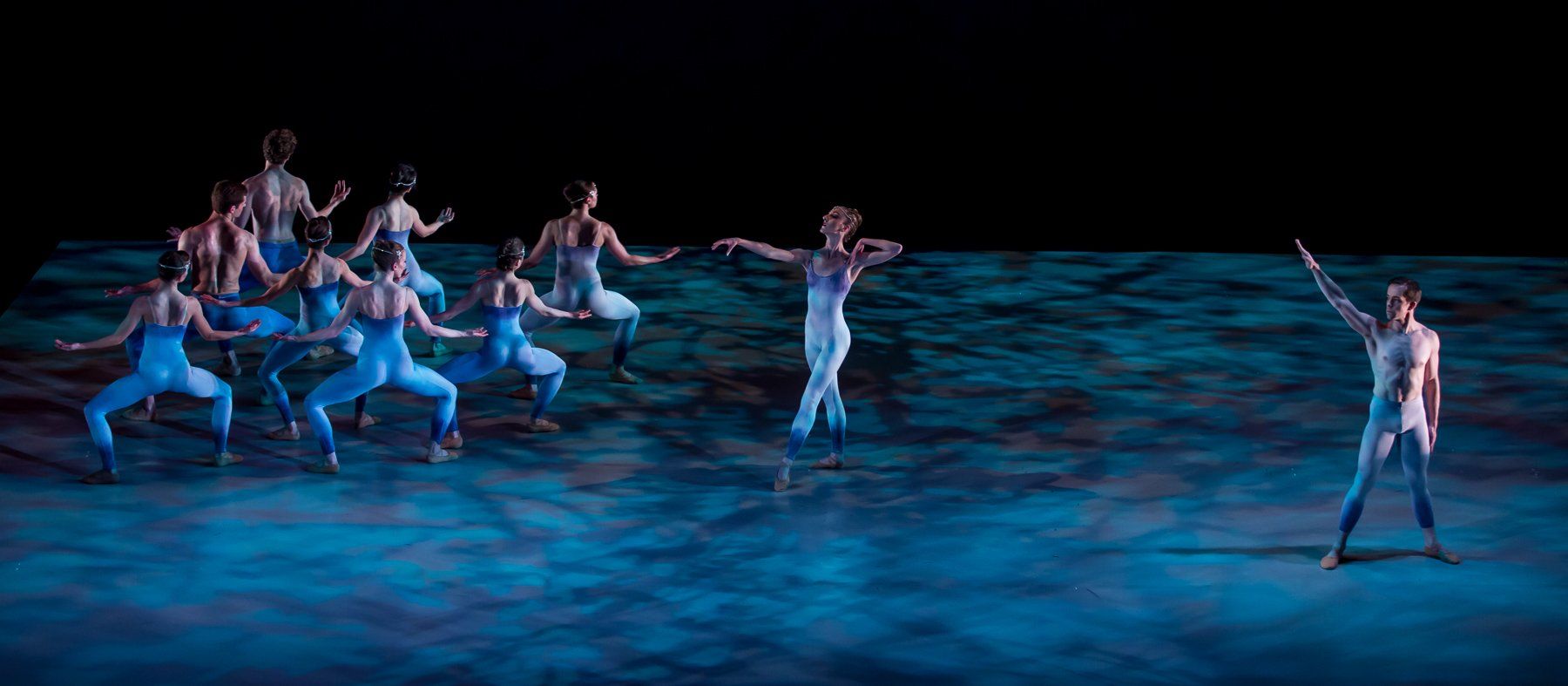HOME »
RITE OF SPRING

The Rite of Spring, Bolero & More
April 22nd at 2:30pm & 7:30pm
The Adler Theatre, Davenport, Iowa
The Rite of Spring
Igor Stravinsky’s landmark 1913 score stars as the inspiration for Courtney Lyon’s cutting-edge abstract ballet. Not seen since its 2014 world premiere, Ballet Quad Cities’ Rite of Spring brings the art and athleticism of dance to life.
Joedy Cook, CEO and founder of Ballet Quad Cities, was approached in 2012 by Orchestra Iowa’s Music Director Tim Hankewich and then-Executive Director Robert Massey to partner with them the production of three Stravinsky ballets over several seasons: “Petrushka”, “The Firebird” and “The Rite of Spring” (in celebration of its 100th anniversary). Choreographed by Artistic Director Courtney Lyon, “The Rite of Spring” is a 35-minute abstract ballet created for eleven dancers and premiered at the Paramount Theater in Cedar Rapids, IA in the spring of 2014. The ongoing partnership between Ballet Quad Cities and Orchestra Iowa has produced challenging, cutting-edge works, as well as superbly re-imagined classics like “The Nutcracker.”
“The Rite of Spring” caused a sensation at its 1913 Paris premiere and was met with near-riots from the moment the curtain went up on the Ballet Russes dancers. Audiences were not prepared for what was then termed “the dissonance and barbaric rhythms” of the modern music, nor the scene of a pagan ritual celebrating the return of spring and renewal of the earth through the sacrifice of a young maiden. Though regarded scandalous then, the premiere is now considered to have been the most important in history, and the music now inarguably standing as one of the 20th century’s most visionary works.
The music is divided into two parts—Adoration of the Earth and The Sacrifice—and is subdivided into 13 sections. Each section bears a title descriptive of Stravinsky’s concept. The Adoration of the Earth focuses on group rituals surrounding spring and the earth while The Sacrifice focuses on the tradition of the Ancestors and choosing the Sacrifice. The foundation for Stravinsky’s music borrows heavily from Russian folk songs and pagan rituals. Lyon has created a unique atmosphere of timelessness with a very specific movement vocabulary for the dancers. She distills the narrative to its essence to express the power of tradition, the tension between order and chaos, and the danger of unquestioned ritual. The sleek, dynamic, and dramatic choreographic style is a hallmark of BQC’s productions.
Boléro
Boléro is French composer Maurice Ravel’s most famous musical composition. During its premiere performance in 1928, a woman was heard shouting that Ravel was mad. Ravel is said to have remarked that she had understood the piece!
As one of the most popular pieces of classical music, Boléro has often been choreographed. However, this Ballet Quad Cities version, choreographed by Artistic Director Courtney Lyon, is perhaps the most original and imaginative of all, set on five dancers and four chairs. Premiered at the Crème de la Crème at the Gallagher Bluedorn Performing Arts Center in Waterloo, IA on April 26, 2015, with Benjamin Loeb and Marian Lee on piano (performing the four-handed arrangement), it received a charged standing ovation from the glowing audience.
The backstory: In early 2015 Cities Symphony Orchestra’s Executive Director Benjamin Loeb had approached Ballet Quad Cities’ CEO and founder Joedy Cook about a future collaboration, suggesting Ravel’s Boléro for four hands. Before the choreography was even finished, Loeb viewed the work in progress and was so impressed he immediately invited the company to join him in a few days to perform the premiere.
The structure of Boléro consists of two themes repeated eight times at a moderate tempo, without variation, except for the melody that is passed among different instruments of the orchestra. The music starts very quietly and increases in volume until it reaches the finale which is to be played as loudly as possible. The choreography has been constructed the same way: two initial dance phrases, and then passed around, showing up on different body parts, different dancers, and different planes of the dance space, the same way the melody is passed around the instruments of the orchestra. The effect is utterly mesmerizing — even spellbinding, some would say — and has become one of Ballet Quad Cities’ most enthusiastically received works.
See it while you can! You won’t want to miss it!
Sponsored by: Quad Cities Cultural Trust - Adler Theater Foundation, The Bechtel Trusts, Iowa Arts Council, and Leslie Bell
